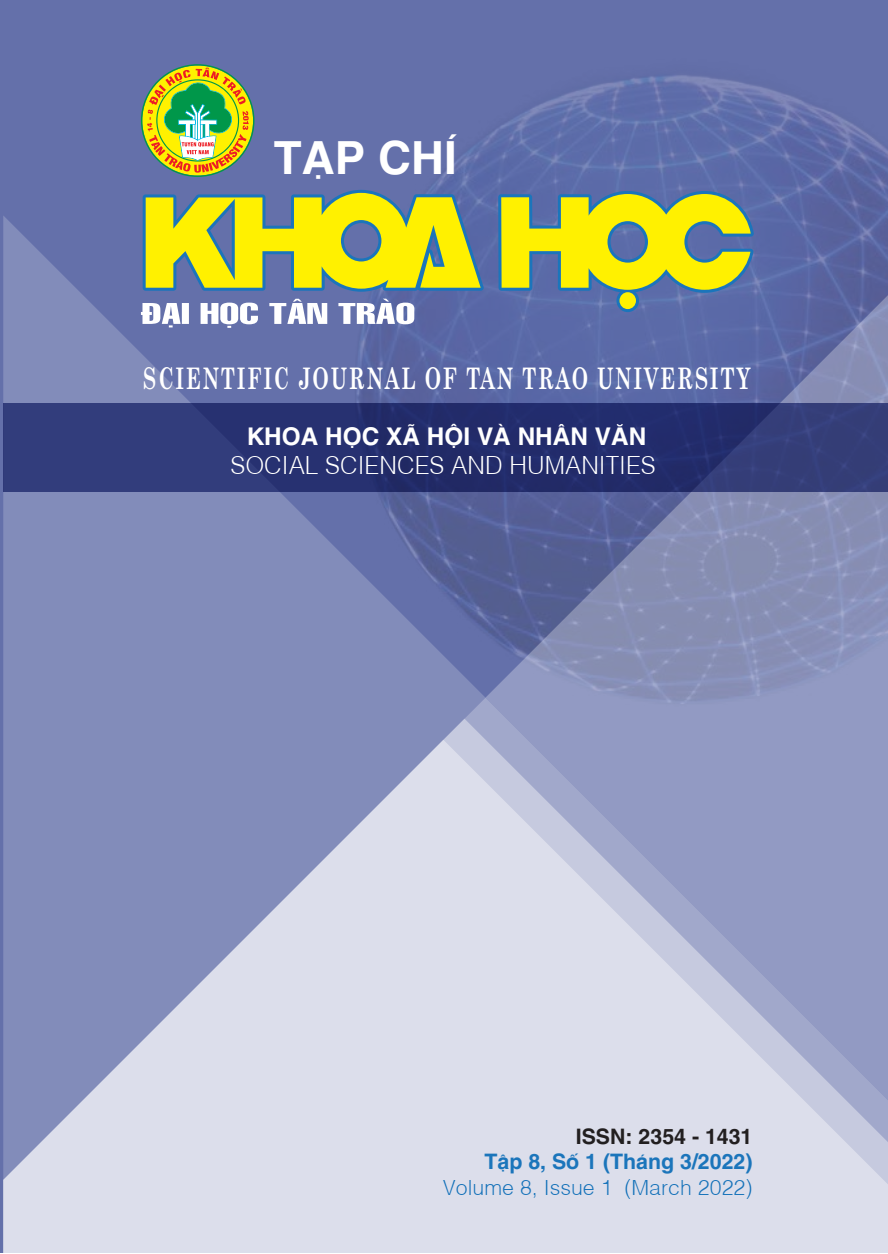INVESTIGATING SELF-DEFENSE SKILLS OF 5-6 YEAR-OLD CHILDREN AT KINDERGARTEN IN THE NORTHERN MOUNTAINOUS REGIONS
DOI:
https://doi.org/10.51453/2354-1431/2022/718Keywords:
Self-defense, formation, skills, preschool children, preschoolAbstract
Self-defense skills are an important element in the system of life skills that need to be formed and developed for 5-6 year olds, especially children in mountainous areas with most of them being from ethnic minorities. Some live in remote areas, which have mountainous terrain and harsh climates. Children going to preschool face many difficulties and are at high risk of unsafety; for example, houses and schools are often located on mountain slopes and steep slopes; the distance from home to school is far, children walk by themselves without the accompany of an adult; floods, thunder, landslides; being kidnapped; being violated; getting lost, traffic accidents, drowning; getting a burn; sharp things; being bitten by insects and wild animals; being hungry, thirsty, sick with a fever; stay at home alone when parents go to work for a long time; ... Therefore, we conducted this study with the aim of discovering the current status of children's self-defense skill level, to understand the barriers to self-defense skills education activities for children in these areas. The research methods used in this study include survey, process observation, situation exercises, interviews, mathematical-statistical methods (SPSS 20.0 software), etc. Children's sense of comfort and active participation in school activities ranged from 2.62 to 2.64 on average; The level of children's self-defense skills in the surveyed skill groups is mainly distributed at levels 2 and 3, from 1.18 to 2.52 (out of the 4 assessment levels).
Downloads
References
[1] Deblinger E, Stauffer L, Steer R. 2001. Comparative efficacies of supportive and cognitive behavioral group therapies for children that were sexually abused and their unoffending mothers, Child Maltreatment 6(4): 332–343.
[2] Huong,N.T.X.. Situation and measures to educate self-defense skills for preschool children in some preschools in Dong Hoi City, Quang Binh Province. Education Magazine, Issue 482 (Term 2 - 7/2020).
[3] Maureen C. Kenny (2008). Child Sexual Abuse: From Prevention to Self-Protection. Child Abuse Review Vol. 17: 36–54 (2008) Publish online in Wiley InterScience (www.interscience.wiley.com) DOI: 10.1002/car.1012.
[4] Ministry of Education and Training (2017). Early childhood education program. Vietnam Education Publishing House.
[5] Ministry of Education and Training (2020). Practice observing children according to the process of preschool institutions. The document is published by VVOB and the Ministry of Education and Training.
[6] Runyon MK, Basilio I, Van Hasselt VB, Hersen M, (1998). Child witnesses to interparental violence: Child and family treatment. In Handbook of psychological treatment protocols for children and adolescents. The LEA series in personality and clinical psychology, Van Hasselt VB, Hersen M (eds). Lawrence Erlbaum Associates: Mahwah, NJ; 203–278.
[7] Wurtele S, Owens J. (1997). Teaching personal safety skills to young children: An investigation of age and gender across five studies. Child Abuse & Neglect 21: 805–814.
[8]https://www.unicef.org/vietnam/media/1016/file/B%C3%A1o%20c%C3%A1o%20t%C3%B3m%20t%E1%BA%AFt.pdf. Summary Report on Mental health and psychosocial well-being of children and young people in some provinces and cities in Vietnam, 2015.
Downloads
Published
How to Cite
Issue
Section
License

This work is licensed under a Creative Commons Attribution-ShareAlike 4.0 International License.
All articles published in SJTTU are licensed under a Creative Commons Attribution-ShareAlike 4.0 International (CC BY-SA) license. This means anyone is free to copy, transform, or redistribute articles for any lawful purpose in any medium, provided they give appropriate attribution to the original author(s) and SJTTU, link to the license, indicate if changes were made, and redistribute any derivative work under the same license.
Copyright on articles is retained by the respective author(s), without restrictions. A non-exclusive license is granted to SJTTU to publish the article and identify itself as its original publisher, along with the commercial right to include the article in a hardcopy issue for sale to libraries and individuals.
Although the conditions of the CC BY-SA license don't apply to authors (as the copyright holder of your article, you have no restrictions on your rights), by submitting to SJTTU, authors recognize the rights of readers, and must grant any third party the right to use their article to the extent provided by the license.


